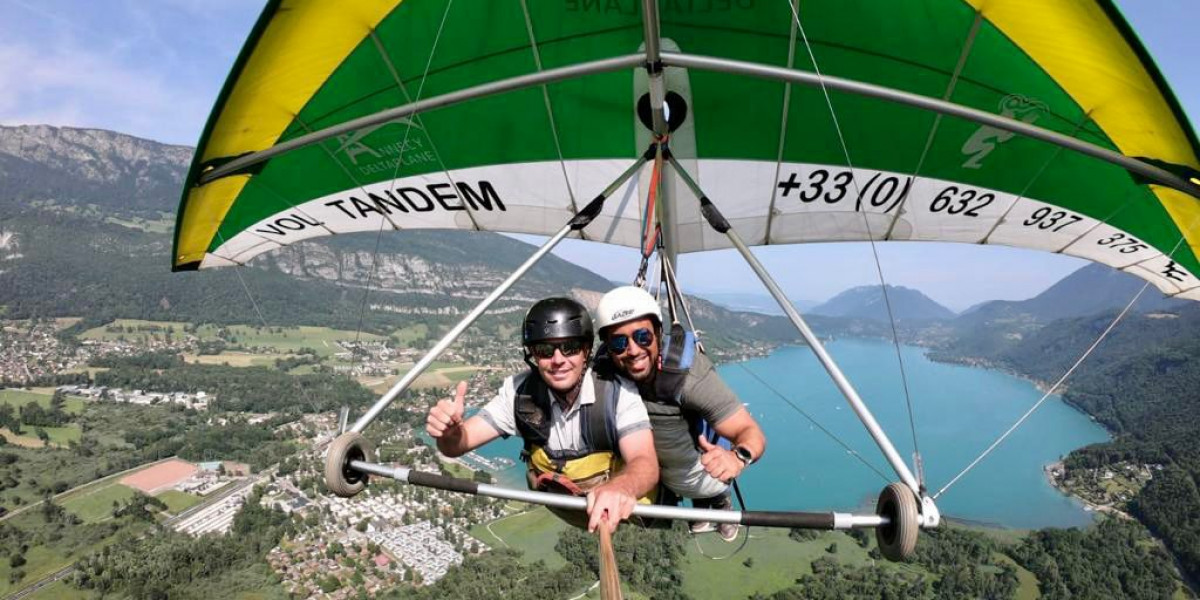Related to paragliding, hang-gliding is a light weight aircraft that lends its name to the sport of free flight on the said aircraft. This sport activity is regulated by the International Aeronautical Federation and has many rules that every pilot must master. With Adrenaline Paragliding you will discover the important notions about the origin of hang-gliding and its evolution over the years.
What is hang gliding?
Hang gliding is a sport activity that is regulated in each country, including France, where it is developed by a national federation or a free flight association. It is practised with a triangular-shaped free-flying aircraft, equipped with a trapeze and without a motor. The wing (or sail) of the hang glider can be flexible or rigid depending on its structure. Class 1 and sport class wings are called flexible, while class 5 and class 2 wings are rigid. The latter can reach a speed of 140 km/h in flight.
The first hang-gliding competitions were held with low performance aircraft, but they were appreciated for their finesse. With the development of more powerful wings, the principle of hang gliding competitions has changed. It is based on the completion of a circuit delimited by markers and a common take-off. The beacons that the glider has to fly over are defined by GPS coordinates and the flight paths are set according to the daily weather conditions. Each hang-gliding circuit can be up to two hundred kilometres long.
The organisation of hang-gliding is such that each country, including France, has a national championship, but there is also a European hang-gliding championship organised every two years. The latter alternates with a world hang-gliding championship which also takes place every two years and brings together the national teams of the competing countries. More than 150 hang-glider pilots usually compete in this world event. There are also other specific competitions for the two categories of hang gliders: soft and rigid.
Hang gliding: the origins
The very first configuration of the hang glider was created by the German pilot Albrecht Ludwig Berblinger in the early 1810s. His concept was taken up in 1890 by another German aeronautical pioneer called Otto Lilienthal. It was not until the late 1950s that the American engineer Francis Rogallo developed the hang glider wing that bears his name. The modern flexible wing is descended from it.
Francis Rogallo's design was originally intended for use on space capsules for re-entry into the atmosphere. He made a triangular soft wing for NASA that allowed for high launches, but with the risk of losing its shape under certain circumstances.
Several improvements were made to Rogallo's work over the years. The first delta wing trademark in the world was registered in 1973 by the French company Delta of Christian Paul-Depasse. It was in this year that the name DELTAPLANE was permanently associated with the device. In the 1990s, the development of materials and alloys led to the construction of modern double-surface wings with optimised lift. It was not long after this that hang-gliding training became popular.
What are the principles of hang gliding?
Like paragliding, hang-gliding takes off on foot, using the wind. As a general rule, the pilot must run from a high point to get the aircraft airborne. The steeper the starting point, the less running the pilot has to do. When hang-gliding on flat ground, the take-off can be done with a specially designed winch.
The principle of hang gliding is relatively simple. The hang glider is self-stabilising when it flies and the pendulum steering is done with very little effort from the pilot. To fly at a constant speed, the glider must lie head to wind in the integral harness attached to the solid skeleton of the wing at the attachment point in the middle of the canopy. The trapeze, its two struts and control bar allow the pilot to shift to the sides to move his centre of gravity. This encourages a slight twist in the wings which helps to accelerate or turn to one side.
If it is a rigid wing hang glider, the piloting is different, but is done without much effort since control surfaces are integrated in the wing. These control surfaces are operated by cables when the trapeze moves sideways. First flights in hang gliders are possible with Adrenaline Parapente.

